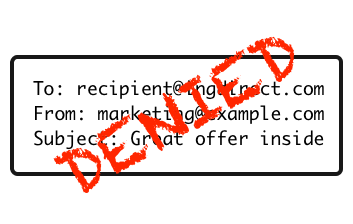Three things marketers should do when domains are retired

A few weeks ago I was alerted to a domain change for INGDirect. The ingdirect.com domain is being retired and all users are migrating to the capitalone.com domain. As part of this change usernames are NOT being transferred, so if you have @ingdirect.com addresses on any B2B mailing list, you will need to drop those addresses and find the new contact information for the subscriber.
What should marketers do when domains are retired?
- If the retirement is announced publicly before the domain is actually retired, send a special campaign to those subscribers asking for their updated information. Not all retirements are public, so that leads us to my second recommendation.
- Have an easy way for recipients to change their email address. Loren McDonald just went through an email address change and blogged about how difficult it was for him to change his email address on many mailing lists. These are subscribers that want to stay on your list, make it as easy as possible for them to do so.
- Check your database for addresses in that domain and make sure there is no way they can be mailed in the future. Relying on your bounce handler to invalidate the addresses isn’t enough. Failing to correctly invalidate addresses correctly means you’re at risk if a domain is turned on or donated to a filtering company. In fact, a couple of the biggest spam trap feeds around are former corporate domains removed from circulation for 3 or 4 years and then turned back on.
Domains go in and out of circulation all the time. Effective marketers have plans in place to deal with those issues as they happen.